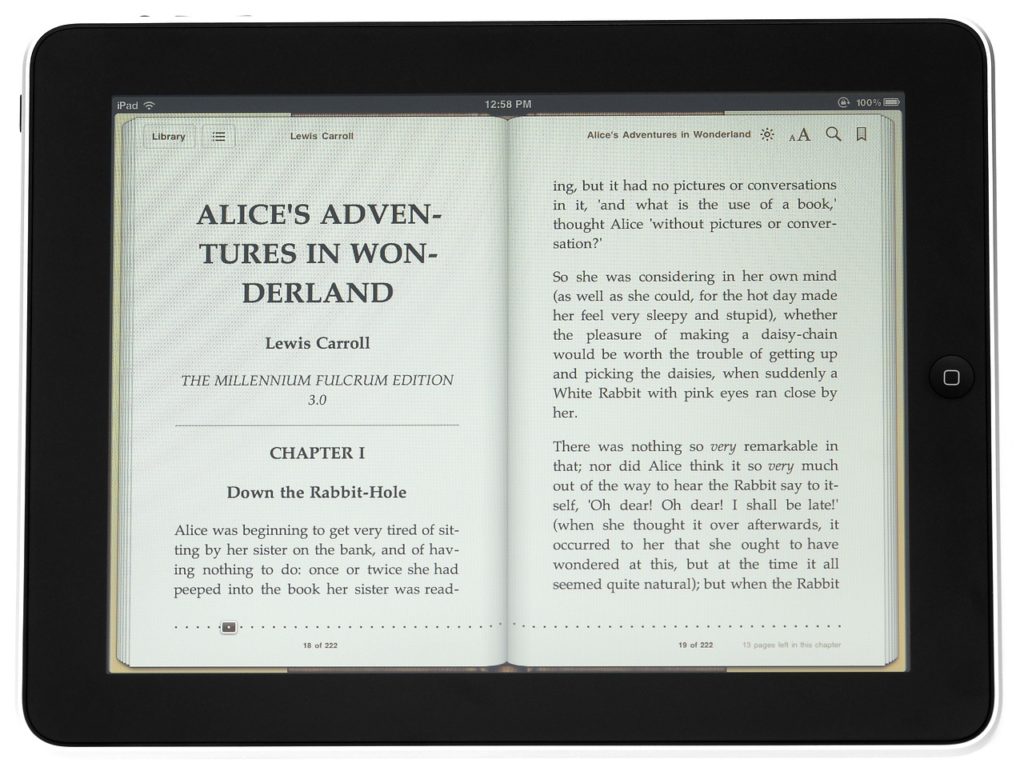Effectively communicate your localgov tech story
Written by Eleanor WillockIn its drive to digitise, the Government last month awarded £800,000 to local councils in support of innovative projects.
For example, Camden Council will receive £80,000 to make it easier for local people and businesses to have their say online on things like major planning projects and town centre changes.
In the grand scheme of things, this new funding isn’t that significant and it won’t go far, but as a top-up on previous local government spending commitments, it’s useful.
“Overall, in the last 6 months, the Government has worked closely with local authorities to understand their needs and provided more than £27 billion to help councils, businesses and communities through COVID-19,” a statement says on gov.co.uk.
In a state of total or partial lockdown, councils up and down the country have no choice but to knock down the barriers they normally face and embrace digital ways of working. After all, local authorities still have to provide services irrespective of the pandemic.
One could argue that for tech suppliers there is now, more than ever, a greater appetite for technology driven solutions to address the most pressing needs of local councils. But, for SMEs especially, it can still be a tough market to make inroads.
According to research group Tussell, in FY2018/19, local authorities awarded only £4bn [19%] of £23bn total contract value to SMEs. That’s better than previous years admittedly, but it’s slow progress to date, and it has the potential to be equally slow going forward.
SMEs need to do more to help themselves: building awareness, being correctly positioned and effectively communicating with local councils is half the battle won. Councils are unlikely to buy from businesses they’ve never heard of or from.
With increased funding and appetite, there is greater competition and a risk that spend will go to those already well established or well-known entities.
Tech suppliers have a choice: to sit back and hope business comes to you [it could be a long wait] or to think more strategically about how you might be able to get better known, build credibility and empathy and encourage buyers to think about working with you.
There is a necessity to show how you have helped councils, sharing examples of best practice and guiding local authorities through experience.
Ultimately, SMEs need to get better at creating stories and telling them, understanding which channels to use to reach the right audiences, and how to use that content to support your sales team and pipeline.
Here’s our 10-step guide for communicating a local government tech story.
1) Identify buyers and stakeholders
Create a list of who you are trying to reach – by this, we mean not only the buyer, but also any stakeholders that may need to be involved.
If your solution needs to be on-premise, then it’s likely you’ll have some involvement with the IT department. But, if you are cloud-based, you may well find that you are selling directly to the department lead. If any part of your system is directly accessed by citizens, then you may see that customer services also wishes to be involved. And, of course, if your system requires whole council buy-in, you will most likely need to target the c-level execs.
The list doesn’t need to be enormously detailed, but it will influence how you reach out to people and ultimately how you tweak your content to ensure it will resonate with them.
It’s also really important, more so even than identifying buyers alone, to understand the knowledge level of the buying audience and stakeholders, for example:
- If your technology is new, so new in fact, that buyers are unlikely to know about it or understand it, you’ll need to educate them before a sale can happen. For example, we may all know the term AI (Artificial Intelligence) now, but what did we really know even 12-months ago? Do local councils know enough now to put their hands in their pockets and invest? The tech industry is driven by pioneering innovations and its often this very thing that also becomes the sale blocker. Few public sector bodies will take a risk on untried, unproven technologies.
- It may be that the technology is understood or known, but not the benefits. The buyer could have a critical knowledge gap that is preventing them hitting the green light. When the public purse is at stake, demonstrating how a product or solution can reduce costs, increase productivity or drive quantifiable change is essential. Local government is no place for ‘taking a punt’.
- It could also be the case that whilst the technology and its benefits are widely known, you as a business are not. As mentioned above, SMEs have a hard time in the public sector – not least local government – proving your worth against larger, more well-known players, showing where you have done it before, and becoming a safe bet is no small feat.
Again, this doesn’t need to be an exhaustive planning phase, but buying audience knowledge does impact your next steps.
Tip 1: Whatever way you intend to tell your story to local government, always keep your audience homework to hand.
2) Messaging that encourages a sale and doesn’t frighten people away!
What are the messages that you want to get across? N.b. this isn’t the same as the overall story. The story is the story, but what tone do you need to get across and what do you want the reader [listener / viewer] to come away thinking about you and the business?
Right now, we hear the message of ‘disruption’ quite a lot [i.e ‘we’re a disruptor’ or ‘we’re a disruptive business’]. It’s an understandable message. Local government is traditionally dominated by big suppliers with very little desire to innovate. Equally, local government has – traditionally – had little interest in doing things differently – although with the ongoing pandemic we have seen a step change in attitudes shifting towards ‘we just need to get this done’. Step forward disruptive companies.
Projects that I was working on that were taking months – if not years – to sign off, are now getting signed off in days. This is not without the proper due diligence of course, but there is a real need to change and change quickly.” – Kent County Council organisation development lead.
We feel there needs to be a balance struck. A business can be disruptive if it can also be shown to be:
- Proven
- Trusted
- Risk free
- A safe pair of hands
- Wanted / desired
- Measured
The tone of the business can be fun, youthful, energetic and exciting, but if you’re regularly pitching to the c-level and there are six-figure sums at stake, perhaps the tone of the business needs to be more professional, serious or business-like?
Work with your senior team to understand what they want the tone of the business to be and what messages they want to give to people.
Ultimately, even with big spending promises from the Government, local government will always have its wings clipped by budget constraints. Every penny must count towards something and, like it or not, risk-free and safe is likely to win out over an unproven disruptor.
Tip 2: Whenever you produce – a piece of content, a video or social media message – write it out and then check that both the tone is correct, and that it’s on message.
3) Campaigns
You need to carry out more research into your buying audience – this is an extension of point one. Get your team together and agree between you: what are the pain points of your customers and prospects now? What are they struggling with today? What do they need help with right at this moment in time that will lead them to you?
Tip 3: Create a big chart with a semi-circle line – at one end write ‘new and emerging’, in the middle write ‘current’ and at the end write ‘old and boring’. Plot your prospects issues on the chart and then start to think about campaigns that can support either those in ‘new and emerging’ or ‘current’ sections.
4) Assets worth having
What stories do you have available to underpin your campaign and, what assets do you have to support the stories? Any customer that will speak on your behalf, and or end user, is always going to be your strongest asset. If you think back to messages around being ‘proven and a safe’ choice, nothing speaks louder than a customer reference. The timing of the customer reference is important too – a new contract win isn’t quite as strong an asset as a 6 – 12-month-old customer with real ROI to show.
Do you have a physical product to show off? In the B2B tech world, driven by cloud deployments, a physical product is becoming less common, but it’s certainly possible.
Other potential assets to help tell your story:
- Loyal customer, end user [resident] or partner
- Physical product that can be demonstrated
- Great spokesperson
- Unique [really, really unique] research, study or survey
- A truly unbiased whitepaper or other detailed view of a technology or solution
- A LinkedIn group or forum that you own
- An infographic or other relevant image
- A well followed podcast [or podcast series]
Tip 4: If you plan by campaign [which is always a good idea], create a spreadsheet that tracks campaigns, messages, storylines and assets available to support each – like a matrix. Keep it updated.
5) Inputs: stories need effort
What can you put into the process? A story doesn’t tell itself. Do you have someone in the business that can, for example, interview a customer and draft a piece of content? Do you need to allocate budget and outsource that role? Do you need to put time into building a demonstration product or organising a roadshow [perhaps virtually]?! Will you need to allocate funds for social media advertising, paid-for media or paid search?

6) Activities
How do you communicate a story doesn’t have a single answer. Under the banner of PESO [Paid, Earned, Shared and Owned media] the options available are quite wide. Here’s a working example:
You have fabulous local council customer that is willing to be a reference for you [that’s the asset]. You’ve set aside budget and hours [the input] and decided to create:
- A written press release to secure Earned media [press coverage] with a view to creating more awareness, understanding and trust in what you do
- You write a small story for posting to your owned website, LinkedIn page and blog, which helps with SEO and inbound leads
- You work with the customer to create a video that both parties can use on Shared media [mostly likely LinkedIn and Twitter]
- And, then, to really drive lead generation, you create a paid LinkedIn advertising campaign to specifically target the desired job titles and drive back local government leads to a bespoke landing page and detailed case study
Ultimately, the PESO activities chosen [even if it’s all of them] should be linked back to specific need of the audience. If you need broad awareness of the business or solution, make use of Earned media. If you want engagement and interaction, use social media. If you want to deliver specific leads, think about social media advertising.

7) Activities [customer]
Working with a local council customer asset takes patience and a great relationship. Unlike an article or whitepaper authored internally to a business spokesperson, you’ll really need to follow a strict process to develop customer content, especially in local government. In summary:
- Is the project live?
- Is the customer happy?
- Interview the sales or business development person closest to the story
- Interview the customer to get their input too – in their own words. VERY rarely does a good story develop without the early involvement of the customer
- Create a complete first draft for approvals. Don’t rely on the sales person to do this for you – take ownership. Have a single person handle the full edits and approval process from start to finish
- Make sure the local council’s press team understands what is happening, and when – don’t side step the press team, if you try, it could be the end of the possibility to collaborate
- If the project size is significant, expect to be asked to include a quote from the local counsellor and not just the customer lead
- If the project could be viewed as especially political, expect that delays may happen and more reassurance needed
- Set everyone at ease by working on a small piece of content initially – like a press release – and scale up depending on the capacity and willingness of the customer.
Tip 5: Preparation is everything. Think about the questions you want to ask the customer, write them down. Ask a colleague to join the call with you – one person to ask questions and respond with the second person making notes and jotting down any extra questions that have come up. Recording the call helps [with permission of course].
8) Activities [Earned media]
If your business or solution is lacking broad awareness or knowledge, often Earned media is the best answer, but knowing who to target and how takes research. There are lots of ‘news wire’ services on the market that can take a press release for you and distribute it out to the media. And that is all it will do. I’d be very surprised if any journalist at the other ends reads it. News wire services are useful for seeing your press release published on third tier websites and that in turn may help with google search results. However, if you really want a journalist to pick up your story and publish it, then it takes a more targeted approach.
For local government tech stories, start regularly reading the media below, make a note of the journalists specifically writing about issues and stories that are similar to what you do, and then contact them directly by email with a clear summary of your story and why they should be interested.
- Guardian Public Leaders
- Local Government Chronicle
- Municipal Journal
- Local Government News
- UK Authority
- net
- Government Computing
- New Statesman Tech
Tip 6: Journalists are really busy. Don’t be surprised if they ask for an interview so they can understand your story more quickly. Don’t be surprised if they take your press release and shorten it even further. Don’t be surprised if they ask you for exclusive content – after all we all need clean, exclusive content to gain better search results.
9) Measure and repeat
The smart thing to do when telling a story to local government is track results, measure, repeat or improve. If you place paid-for advertorial with the Local Government Chronicle and the results aren’t great or as expected, you’ll need to think about whether it’s the story, the way it was told or the media channel used to share it.
Start tracking at four levels using the AMEC framework:
- Outputs – What was the reach of the paid advertising? How many visitors to the website? How many posts, tweets or retweets, how many people attended the event, and how many potential readers of the media coverage?
- Outtakes – What was the response and reactions of your target audiences to the activity? How attentive were they to the content, what was their recall, how well understood is the topic, did the audience engage with the content or did the audience subscribe to more information? This will need prospect research.
- Outcomes – measures the effect of the communications on the target audience. Have the target audience increased understanding, has it changed their attitude to the topic, has it increased trust and/or preference, has it had an impact on the intention to do something (e.g. trial, subscribe, register) or increased online advocacy.
- Business Impact – has there been a reputation improvement, relationships improved or established, increase in sales or donations, change in policy, or improved social change? This should be a clear demonstration of business outcome and link to organisational objectives.

10) Learn from others
Case study 1: One council, and a digital transformation story to tell

One of the things we love the most here at Mantis is developing relationships with our clients and their customers. One of my favourite partnerships so far has been with our client Arcus Global and its customer, St Albans City & District Council. We wanted to tell St Albans’ digitisation and transformation story, and elevate Arcus Global’s presence as a real leader in the digitisation of local government processes. During the campaign, we turned St Albans from a customer into an engaged advocate, and reached almost two million readers with their story.
St Albans’ old IT infrastructure was limiting its ability to provide the most exceptional citizen service. Over the past few years, Caroline Croft and Simonne deVall (digital & ICT manager and head of corporate services at St Albans respectively) have spearheaded the work with Arcus Global to implement a digital platform that enables the Council to easily switch-on a library of council processes online, create a single point of web access for citizens and gives the Council a single view of how the citizen is interacting with its services. The whole digitisation process has also given the Council a host of new information and business intelligence to aid strategic decision making going forward.
On working with Arcus Global, Caroline has commented: “We have valued Arcus Global’s local government expertise, its wide range of Local Government processes which can be shared and reused, and its guidance every step of the way.”
OBJECTIVES
Our aim was to raise the profile of St Albans and its digital transformation work, demonstrate its successes and pioneering developments and use it as a platform to promote Arcus Global as a transformation partner.
To help take St Alban’s story to its local authority peers, we had our sights set on top tier IT and public sector earned media outlets. Mantis client services’ director Anna Hennessey worked with Arcus Global’s head of marketing Kate Warboys, and Caroline and Simonne to write up a full case study of their digitisation project, which would then be adapted by account executive Caitlin Napier into further pieces of content to pitch to the media to secure earned media coverage.
We decided which media to prioritise first with the case study, to secure interviews for Caroline and place exclusive content, before branching out and targeting more publications.
The case study acted as a versatile piece which could be adapted into further pieces of content such as a Q&A, an opinion article, and a press release.
RESULTS
Using interviews and the wide variety of content we produced, we have secured placements in seven major IT and public sector tech titles so far – the total reach for these is 1,800,000.
We were delighted with the results generated, seeing the benefits of repurposing content for different publications and trying many different pitching angles. It shows just what can be achieved with a single customer.
Case study 2: Taking a smart story to smart influencers – how we reached 36 million people through earned media for Connexin, with a 48-hour lead time

Being Mantosians, we’re well versed working with companies that transform the public sector. For us, we’re in our element when we find the ones that can really show us the difference they are making.
We can’t help but be enthused to create content that tells the story and is shared with the right people through the right channels. We always hope that others, may be just as bold and brave enough to make similar change to positively impact the lives of others too.
Media relations is our speciality, and we love everything about it, from talking journalists through a story, to filling a client’s inbox with a steady stream of coverage in the titles they really wanted to be in, especially if they’ve never been featured there before! One company that really excites us at the moment is Connexin who build smarter connected cities. We’ve been working on a variety of projects with them, the first revealing the direct impact they are having on their home city of Hull.
The story
Hull has become the first city in the UK to benefit from its own purpose-built Smart City Operating System to become a programmable city, courtesy of Connexin. Connecting essential council services such as lighting, parking, traffic, waste management and Wi-Fi deployments, and integrating them into a single software platform.
Objective
We were tasked with a media relations campaign to target Connexin’s key buying audiences via earned media, and generating coverage with IT and public-sector press on this story. We worked with Connexin, Cisco’s Smart City PR team, and the comms manager at Hull City Council, and led the content development. We decided which media to target and which to prioritise with exclusives and interviews, which we then staffed.
It’s not difficult to talk journalists through Connexin’s Hull story because it’s such an original innovation. The expertise comes in how you contact them and at what point you ‘settle’ for the work you’ve done. We couldn’t settle for anything less than what we thought this story deserved, and, because Mantis is trusted by the journalists we work with, the coverage began to drop in within 48 hours of being cleared to begin the project.
Results
- We got 22 articles with a 36,852,061 potential reach (with figures available).
- Needless to say, we were very happy with this result and it was a great way to kick start the relationship. Connexin and its customers have such good stories to tell and we at Mantis relish the opportunity to tell them.
About us

At Mantis, we help technology providers tell stories using clever content circulated through the right channels, to reach the right people. We are experts in a very specific area – creating content about the technology, services and ideas that the public sector is using to change people’s lives. We help our clients become, and stay relevant in this area by devising and delivering earned, paid, shared and owned content strategies for them. Our skills and experience are recognised by our clients, the media we work with, and the public sector teams we work with too. Mantis is trusted across the education, NHS, local government, police and central government as an agency that is sympathetic to customer need.
Mantis team
Each campaign team is picked for every client by our GM, according to skills and experience. We focus on what’s important to you. Clever content? Media relations? Strategic counsel? Events expert? Someone local to you? We provide the most suitable.
Our services
- Customer stories. We become your agent for customer content creation. We develop the relationships, discover new stories, and turn happy customers into fantastic advocates across written and spoken media
- Earned media contact. We create news and thought leadership using the narratives that you have to create solid outcomes in the technology, public sector, national and broadcast media. We help you set the strategy that will have the most impact
- Paid media campaigns. We believe paid media campaigns can have a place in our impact-focused strategies. We manage your content marketing needs and create intelligent, outcome driven copy that drives leads to your digital presence
- Owned content. We create web and digital content for sites and specific content hubs, as well as print copy. We manage blogs, set content strategies, and offer help in the creation of message and tone for all corporate material
- Shared media. We’ll work with you to plan and manage the content for your social channels, creating engagement that makes the impact we’ve planned for
- Events and panels. Our team loves organising bespoke events in our specialist areas, from closed door roundtables to panel discussions and conferences
- Influencer relations. If your target buyer market is small and you think traditional PR won’t show value, we can create micro-influencer and personal content marketing campaigns which get the desired results
- Advice and counsel. Our senior team is a strong presence on all our campaigns and we provide Board level consultation on communication strategy and crisis management issues
To get in touch with the Mantis team to discuss the support you need with PR and communications, please contact Rebecca, Martine and Caitlin on salesandmarketing@mantispr.co.uk




